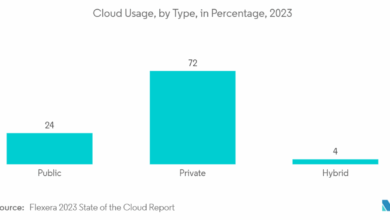The New World of Global Internet Expansion A Deep Dive
The new world of global internet expansion is revolutionizing our world, connecting billions and reshaping economies, societies, and cultures. From the intricate network of fiber optic cables spanning continents to the burgeoning impact of 5G and beyond, the changes are profound. This exploration delves into the multifaceted nature of this digital transformation, examining its economic, social, and security implications, while also addressing the crucial issues of the digital divide and the ever-evolving technologies that drive it.
This expansion is not without its challenges. Issues like internet security, the digital divide, and the potential for cultural clashes need careful consideration. The article will explore these issues in detail, offering both optimistic perspectives and critical analyses. It will also discuss the crucial role of governments and international organizations in navigating this complex landscape.
Global Connectivity and Infrastructure
The global internet is no longer a nascent technology; it’s a fundamental pillar of modern life, connecting billions across continents. This interconnectedness hinges on a complex web of infrastructure, constantly evolving to meet the demands of a rapidly expanding digital world. From the intricate designs of fiber optic cables to the soaring orbits of satellite constellations, the global internet infrastructure is a marvel of human ingenuity.
This evolution promises even greater accessibility and speed, transforming industries and enriching lives worldwide.The advancement of global internet infrastructure is crucial for economic growth, educational opportunities, and social progress. Modernizing the physical pathways that transmit data allows for more efficient communication and faster processing, fostering innovation and collaboration across borders. Increased access empowers individuals and communities, fostering a more interconnected and equitable global society.
Fiber Optic Cables and Submarine Networks
Fiber optic cables have revolutionized data transmission, replacing older copper technologies with a vastly superior capacity. These strands of glass transmit information using light, enabling incredibly high speeds and low latency. Submarine cables, intricate networks spanning vast stretches of ocean, are vital for connecting continents and facilitating global communication. These cables form the backbone of international internet traffic, carrying a significant portion of the world’s data.
The recent advancements in submarine cable technology, focusing on higher bandwidth and improved durability, signify a major leap forward in global connectivity. These improvements are crucial for supporting the ever-increasing demand for data transmission.
Satellite Constellations and Wireless Access
Satellite constellations, composed of numerous interconnected satellites, are expanding global internet access in remote and underserved regions. They provide coverage to areas where terrestrial infrastructure is absent or challenging to deploy. The increasing number of low-Earth orbit (LEO) satellites contributes to lower latency and broader coverage, making internet access more reliable and accessible in these areas. This growth has led to innovative applications, such as real-time communication and data transfer, transforming remote areas with access to crucial services.
Impact of 5G and Future Wireless Technologies
G and future wireless technologies are poised to further revolutionize global internet access. 5G networks, with their significantly higher bandwidth and lower latency, will support the burgeoning demand for data-intensive applications. This will include the expansion of virtual reality and augmented reality applications, remote surgery, and advanced manufacturing processes. Furthermore, the development of 6G and beyond will potentially lead to even faster speeds and enhanced capabilities, offering unprecedented opportunities for innovation and communication.
Challenges and Opportunities in Underserved Regions
Expanding internet access in underserved regions presents both challenges and opportunities. These regions often face infrastructure limitations, financial constraints, and digital literacy gaps. However, overcoming these challenges can unlock significant economic and social benefits. Targeted initiatives, focusing on building local infrastructure, providing affordable access, and promoting digital literacy programs, can bridge the digital divide. These initiatives can empower local communities, fostering economic growth, education, and healthcare.
Geographical Distribution of Internet Penetration
| Continent | Internet Penetration (%) |
|---|---|
| North America | 90+ |
| Europe | 90+ |
| Asia | 60-80 |
| South America | 70-85 |
| Africa | 40-60 |
| Oceania | 80+ |
Note: Data is an approximation, and figures can vary depending on the source and the year of measurement. Internet penetration rates reflect the percentage of the population with access to the internet. The table illustrates the significant disparity in internet access across continents, highlighting the need for targeted initiatives to bridge the digital divide.
Economic Implications
The global internet’s expansion presents a profound opportunity for economic growth and development across the globe. It opens new avenues for trade, commerce, and investment, potentially fostering a more interconnected and prosperous world. The ability to access global markets and collaborate remotely can revolutionize industries and create opportunities for entrepreneurs, particularly in developing nations.The impact of this expansion extends beyond immediate economic gains.
It can contribute to poverty reduction, improved living standards, and enhanced human capital development. By bridging geographical divides and fostering innovation, the internet can reshape economies and societies in ways that were previously unimaginable.
Potential Economic Benefits
The expansion of the global internet creates new markets for businesses, enabling them to reach consumers worldwide. This increased market access can lead to significant growth in revenue and profitability. Enhanced trade and commerce, facilitated by digital platforms and e-commerce, are crucial components of this economic expansion. This allows for greater specialization, as businesses can focus on their core competencies while leveraging global markets.
Impact on Job Creation and Entrepreneurship
The internet acts as a catalyst for job creation, particularly in developing countries. It empowers individuals with access to information, resources, and tools that were previously unavailable. This fosters entrepreneurship and allows individuals to start businesses from remote locations, often with minimal capital investment. Digital platforms provide new avenues for freelancers, online tutors, and other independent workers to engage with global markets.
This empowers them to earn a living while overcoming geographical barriers.
Examples of Successful Digital Businesses
Numerous businesses have successfully leveraged the global internet expansion to achieve significant growth. Companies like Alibaba and Amazon have transformed global commerce, connecting businesses and consumers on a vast scale. Other examples include online education platforms, digital payment systems, and social media networks, which have fostered communication and commerce across borders.
Comparison of Economic Models
Countries with high internet penetration often exhibit robust economic growth and development. Their economies tend to be more innovative and dynamic, leveraging technology to enhance productivity and competitiveness. Conversely, countries with low internet penetration face challenges in accessing global markets and participating fully in the digital economy. They may struggle to attract foreign investment and face limitations in adapting to the demands of the global marketplace.
This contrast highlights the importance of internet access as a key driver of economic development.
Correlation Between Internet Access and GDP Growth
| Country | Internet Penetration (%) | GDP Growth (%) |
|---|---|---|
| United States | 90 | 2.5 |
| China | 70 | 6.5 |
| India | 50 | 4.5 |
| Brazil | 65 | 3.0 |
| Nigeria | 40 | 2.0 |
This table illustrates a general correlation between internet access and GDP growth. While correlation does not equal causation, the data suggests that higher internet penetration is often associated with faster economic growth. Factors beyond internet access, such as political stability, infrastructure, and education levels, also play a crucial role in shaping economic outcomes.
Social and Cultural Impacts
The global internet expansion presents unprecedented opportunities for cultural exchange and understanding, but also poses challenges to traditional social norms and cultural preservation. This interconnected digital world allows for the rapid dissemination of information and ideas, fostering interactions across geographical boundaries and potentially leading to a more nuanced understanding of diverse cultures. However, the very nature of this interconnectedness can also threaten cultural identity and linguistic diversity.
This section delves into the complex interplay between the internet and society, examining both the potential benefits and the potential risks.The internet acts as a powerful catalyst for global cultural exchange. It facilitates access to information about different cultures, enabling individuals to learn about traditions, values, and perspectives from around the world. This exposure can foster empathy, tolerance, and a deeper appreciation for human diversity.
Potential for Global Cultural Exchange and Understanding
The internet has democratized access to information and facilitated the creation of online communities dedicated to specific cultures. Platforms like YouTube and social media provide avenues for showcasing diverse artistic expressions, culinary traditions, and historical narratives. This accessibility allows individuals to learn about different cultures from the comfort of their own homes, fostering a sense of global interconnectedness.
For example, online language learning platforms allow individuals to connect with native speakers, accelerating language acquisition and intercultural understanding.
Impact on Online Communities and Global Conversations
Online communities and social networks are shaping global conversations and interactions in profound ways. These platforms allow individuals to connect with others who share similar interests or cultural backgrounds, regardless of geographical location. This can lead to the formation of virtual communities that transcend national borders, fostering a sense of shared identity and purpose. For instance, fan groups for specific films, music artists, or television series often span continents, creating global communities that engage in shared conversations and activities.
These online interactions can promote cultural exchange and understanding by exposing participants to diverse perspectives and experiences.
Challenges to Cultural Preservation and Identity
While the internet offers immense opportunities for cultural exchange, it also presents challenges to cultural preservation and identity. The dominance of certain cultures and languages online can potentially overshadow or marginalize others. The homogenizing influence of global brands and trends may lead to the erosion of unique cultural practices and traditions. Furthermore, the rapid pace of change in the online environment can make it difficult for communities to adapt and maintain their cultural distinctiveness.
This is particularly evident in the preservation of traditional languages and artistic expressions, which may struggle to compete with the dominant global trends.
Impact on Language Preservation and the Spread of Diverse Linguistic Expressions
The internet has both positive and negative impacts on language preservation. On the one hand, online platforms can be utilized to promote the learning and preservation of endangered languages. On the other hand, the widespread use of global languages like English can lead to a decline in the use and vitality of less widely spoken languages. The internet’s role in language preservation depends on a multitude of factors, including the availability of resources and the commitment of individuals and communities to maintain their linguistic heritage.
The spread of diverse linguistic expressions online is influenced by the prevalence of specific languages and the creation of multilingual communities. This dynamic exchange of linguistic expressions is a reflection of the global interconnectedness facilitated by the internet.
Contrasting Social Norms and Communication Styles in Different Online Communities
| Online Community | Social Norms | Communication Style |
|---|---|---|
| Gaming Communities | Aggressive or competitive behavior may be accepted as part of the game, while respect for opponents’ skills is often expected. | Direct, often abbreviated, and sometimes humorous communication is common. |
| Academic Discussion Forums | Formal language and respectful engagement with differing viewpoints are generally expected. | Detailed, well-reasoned arguments and citations are typical. |
| Social Media Groups | Casual, informal communication and a focus on shared interests and experiences are common. | Use of emojis, memes, and other informal communication tools is prevalent. |
| Cultural Forums | Respect for diverse viewpoints and traditions is crucial. | Communication often involves cultural sensitivity and awareness. |
Different online communities often have distinct social norms and communication styles. This table illustrates the diverse nature of online interactions and the need for sensitivity when engaging with different communities.
Security and Privacy Concerns: The New World Of Global Internet Expansion
The expanding global internet presents unprecedented opportunities, but also significant security and privacy challenges. As more people and devices connect, the potential for cybercrime, data breaches, and misuse of personal information escalates. Protecting this interconnected digital landscape requires a multifaceted approach involving individuals, organizations, governments, and international cooperation.The rise of global internet access necessitates robust security measures to safeguard sensitive data and prevent malicious activities.
Data breaches can have devastating consequences, impacting individuals and organizations alike, ranging from financial losses to reputational damage. Addressing these concerns demands a comprehensive understanding of the risks and the proactive implementation of security protocols.
Challenges of Maintaining Internet Security
Maintaining internet security in a globally connected world presents significant challenges. Varying levels of technological infrastructure and cybersecurity awareness across different regions create a significant vulnerability. Difficulties in enforcing consistent cybersecurity standards and protocols internationally further complicate the issue. Cybercriminals often exploit these disparities to target vulnerable systems and individuals. For instance, a nation with weaker cybersecurity infrastructure may become a haven for cybercriminals who use it as a launching pad for attacks against other countries.
Risks Associated with Cybercrime and Data Breaches
Cybercrime and data breaches pose substantial risks in the context of expanding internet access. As more individuals and businesses rely on online services, the potential for financial fraud, identity theft, and reputational damage increases. The sheer volume of data exchanged and stored online makes it an attractive target for malicious actors. Furthermore, sophisticated cyberattacks, like ransomware attacks, can cripple critical infrastructure and disrupt essential services.
The recent targeting of hospital networks and financial institutions underscores the severe consequences of such attacks.
Role of Governments and International Organizations
Governments and international organizations play a crucial role in addressing security concerns. Developing and enforcing international cybersecurity standards and protocols is vital. Collaboration between nations is essential to share information about threats and coordinate responses to cyberattacks. Furthermore, governments can invest in education and training programs to enhance cybersecurity awareness among citizens. International organizations, like the United Nations, can play a key role in facilitating global cooperation and developing guidelines for responsible data handling.
For example, the UN’s work in developing international treaties and agreements on cybercrime is essential.
Legal and Ethical Implications of Data Collection and Use
The legal and ethical implications of data collection and use in a globally connected environment are complex. Data privacy regulations vary across countries, leading to inconsistencies in the protection of personal information. The use of personal data for targeted advertising, profiling, and surveillance raises ethical concerns. Clear guidelines and regulations are necessary to ensure data is collected and used responsibly and ethically.
Furthermore, the concept of data sovereignty—the right of a nation to control the data collected within its borders—becomes increasingly important in a globally interconnected world. The EU’s General Data Protection Regulation (GDPR) exemplifies the need for comprehensive data protection frameworks.
Potential Security Measures and Best Practices
Implementing robust security measures is crucial for individuals and organizations. These practices will mitigate the risks associated with internet expansion and ensure a secure digital environment. A proactive approach, rather than a reactive one, is paramount.
| Category | Security Measures/Best Practices |
|---|---|
| Individual Users | Strong passwords, multi-factor authentication, regular software updates, cautious online behavior, awareness of phishing attempts, and secure Wi-Fi usage. |
| Organizations | Robust cybersecurity protocols, regular security audits, employee training, incident response plans, data encryption, and secure data storage. |
Digital Divide and Equity
The burgeoning global internet expansion presents a unique opportunity to connect billions worldwide. However, the digital divide, the gap in access to and use of information and communication technologies, remains a significant obstacle. This disparity has profound implications for economic growth, social inclusion, and global development. Bridging this divide requires proactive strategies and a focus on equity.The digital divide isn’t simply about a lack of internet access; it encompasses a spectrum of issues, from the affordability of devices and data plans to the availability of digital literacy training.
This multifaceted challenge demands a comprehensive approach that recognizes the unique needs of different communities and contexts. Addressing the digital divide is not just a technical problem, but a social and economic one that necessitates sustainable solutions.
Strategies to Bridge the Digital Divide
Bridging the digital divide requires a multifaceted approach tailored to specific regional contexts. Targeted initiatives focused on affordability and accessibility are crucial. Subsidies for internet access, particularly in underserved areas, can be a powerful tool. Promoting the use of affordable mobile devices and data plans is also essential. Collaboration between governments, private sector companies, and non-governmental organizations is vital for effective implementation.
Promoting Digital Literacy and Skills Development
Digital literacy is a critical component of bridging the digital divide. Training programs that equip individuals with the skills to navigate the internet, utilize digital tools, and participate in the digital economy are paramount. These programs should be tailored to different age groups and educational levels. Curriculum development that integrates digital literacy into existing educational systems can also play a significant role.
For example, schools can incorporate digital literacy courses into their curriculums.
Examples of Successful Programs
Several initiatives have demonstrated success in addressing the digital divide. The “Connecting Communities” program in several African countries has provided affordable internet access to rural communities through the deployment of Wi-Fi hotspots. The “Digital Literacy for Seniors” program in the United States has shown that digital skills training can improve the lives of older adults and help them connect with society.
Other successful programs involve providing training and support for small businesses to adopt digital technologies. These initiatives demonstrate that bridging the digital divide is achievable through well-designed, locally relevant programs.
Current Status of the Digital Divide by Region
| Region | Internet Penetration (%) | Digital Literacy Rate (%) | Mobile Phone Penetration (%) | Notes |
|---|---|---|---|---|
| Sub-Saharan Africa | ~40 | ~30 | ~80 | Significant disparities within the region; access often concentrated in urban areas. |
| South Asia | ~50 | ~40 | ~80 | Rapid growth in internet access, but challenges remain in rural areas and for marginalized groups. |
| Latin America | ~60 | ~50 | ~90 | Generally higher penetration than other developing regions, but disparities remain. |
| Developed Countries | ~95 | ~85 | ~95 | High levels of access and literacy, but disparities exist between socioeconomic groups. |
Note
Data is approximate and may vary depending on the source. The table provides a general overview of the digital divide across different regions.
Technological Innovations and Trends
The internet, once a novelty, has become an indispensable part of modern life. Its continued evolution hinges on technological advancements, driving new possibilities and reshaping user expectations. From the foundational protocols to the burgeoning fields of artificial intelligence and blockchain, the internet’s future is brimming with innovation. This exploration delves into the latest advancements, highlighting their potential impacts and the role of open-source collaboration in shaping this digital landscape.
Latest Advancements in Internet Technology
The internet’s infrastructure is constantly being upgraded, leading to faster speeds, greater capacity, and enhanced security. Fiber optic cables are replacing traditional copper wires, enabling lightning-fast data transmission. 5G and upcoming 6G cellular networks promise even more ubiquitous and high-speed connectivity, expanding internet access to previously underserved regions. These advancements are critical for supporting the burgeoning demands of data-intensive applications and services.
Potential of Emerging Technologies
Emerging technologies like blockchain and artificial intelligence hold immense potential to transform the internet. Blockchain, known for its decentralized nature and security features, can be applied to secure digital identities, facilitate secure transactions, and create transparent supply chains. Artificial intelligence (AI) is revolutionizing user experiences through personalized recommendations, automated content creation, and sophisticated search algorithms. These technologies, while still in development, are poised to reshape the very fabric of online interactions.
Role of Open-Source Technologies
Open-source technologies play a crucial role in fostering global collaboration and innovation. These technologies allow developers from around the world to contribute to projects, leading to more robust and adaptable systems. The collaborative nature of open-source development facilitates rapid innovation and reduces reliance on single entities, thereby enhancing the internet’s resilience and adaptability. Examples like Linux and Apache illustrate the power of open-source initiatives in driving innovation and affordability.
Influence on User Experiences and Expectations
The rapid pace of technological advancement is profoundly influencing user expectations. Users increasingly demand seamless, personalized, and secure online experiences. The ability to access information instantly, connect with others globally, and engage in interactive experiences is now the norm. This creates a continuous cycle of technological development, driven by the ever-evolving demands of users.
Emerging Internet Technologies and Potential Impact
| Emerging Internet Technology | Potential Impact |
|---|---|
| Artificial Intelligence (AI) | Personalized recommendations, automated content creation, enhanced security, improved user experiences. |
| Blockchain | Secure digital identities, transparent transactions, enhanced supply chain management, reduced reliance on intermediaries. |
| 5G and 6G Networks | Increased internet speed and capacity, enhanced mobile connectivity, improved user experience, expanded access to underserved areas. |
| Quantum Computing | Potential for solving complex problems, developing new encryption methods, revolutionizing data processing. |
| Edge Computing | Faster data processing closer to the user, reduced latency, improved real-time applications. |
Governance and Regulation

The global internet’s rapid expansion necessitates a robust framework for governance and regulation. This framework must address diverse interests, technological advancements, and evolving societal needs. Without clear guidelines and shared responsibilities, the internet risks becoming a chaotic space lacking accountability and potentially undermining its transformative potential. International cooperation is crucial for establishing a stable and secure digital environment.International bodies and national governments play vital roles in shaping the internet’s trajectory.
They must collaborate to create a system that promotes innovation, protects users, and safeguards fundamental values while addressing emerging challenges. This necessitates navigating complex issues like cybersecurity, data privacy, and the digital divide.
Role of International Bodies
International organizations, such as the United Nations, play a significant role in setting the stage for international internet governance. Their influence stems from their ability to facilitate dialogue and collaboration among member states. These bodies are responsible for fostering discussions, developing international norms, and shaping the future of the internet. These efforts are crucial for establishing a stable and equitable digital environment.
Challenges in Establishing Common Standards
The diversity of national interests and technological approaches poses significant challenges to establishing universally accepted standards and protocols. Different countries have varying legal frameworks, cultural norms, and technological capabilities. This can lead to conflicts and inconsistencies in the application of rules and regulations. Finding common ground requires diplomacy, compromise, and a shared understanding of the internet’s global importance.
Importance of International Cooperation, The new world of global internet expansion
International cooperation is paramount for ensuring a stable and secure internet. A shared understanding of the internet’s role in global communication, commerce, and societal interaction is essential. Collective action is necessary to address emerging threats, such as cyberattacks, online misinformation, and the abuse of digital platforms. A unified approach can prevent fragmentation and ensure the internet’s continued positive impact.
New Regulatory Frameworks
New regulatory frameworks must address the evolving needs of the global internet. These frameworks should anticipate and adapt to technological advancements, including artificial intelligence and the metaverse. They should be flexible enough to accommodate emerging challenges while preserving the fundamental principles of openness, innovation, and user rights. Examples of such frameworks include updated data privacy regulations and international cybersecurity agreements.
Examples of International Agreements
Numerous international agreements and declarations have shaped the development and governance of the internet. The UN’s various resolutions on the internet’s role in development, the establishment of the Internet Corporation for Assigned Names and Numbers (ICANN), and the development of international cybersecurity standards are examples of agreements and initiatives that have guided the global internet community.
Summary

In conclusion, the new world of global internet expansion presents a thrilling and complex tapestry of opportunities and challenges. It fosters unprecedented connections, drives economic growth, and reshapes social interactions. However, ensuring equitable access, protecting user privacy, and maintaining internet security are paramount. This exploration has provided a glimpse into the intricate threads of this transformation, prompting further discussion and highlighting the need for continued vigilance and proactive measures to navigate the future of the global internet.







